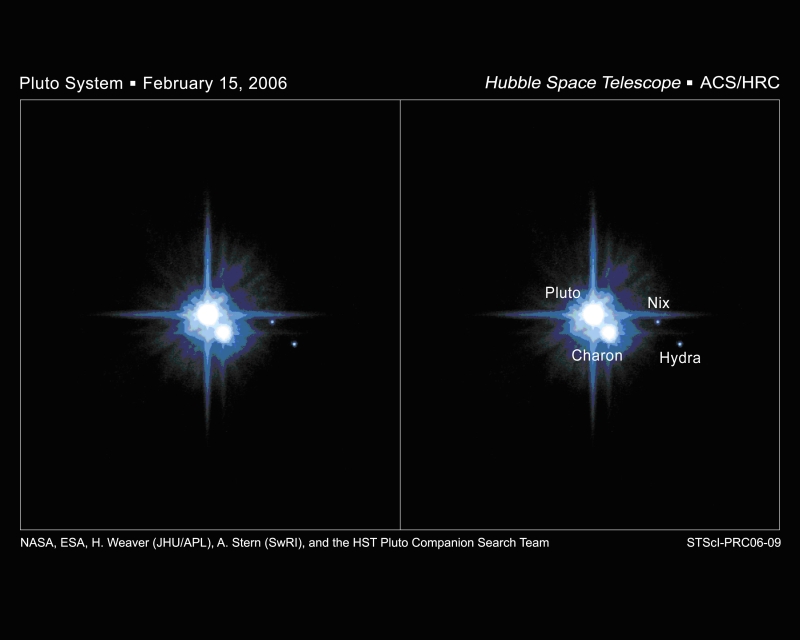ESA’s SMART-1 has been orbiting the Moon for 16 months, but it’s out of fuel, so its life is almost over. On September 3, 2006, it will crash into the Moon’s surface in a final act of science. If its orbit was to decay naturally, the spacecraft would impact on the far side of the Moon; however controllers have devised a strategy to help it impact on the near side, in view of Earth-based telescopes.
Continue reading “SMART-1 Prepares for the End”
Astronauts Prepare for New Supply Ship
Astronauts on board the International Space Station have had a busy week preparing for their next Progress cargo ship. On Monday they detached Progress 20 from the station, which will now burn up through the Earth’s atmosphere. If all goes well, Progress 22 will blast off from the Baikonur Cosmodrome on June 24, and link up with the station on June 26. It’ll be carrying 2.5 tonnes of equipment and supplies.
Continue reading “Astronauts Prepare for New Supply Ship”
MESSENGER Flips Over to Get Some Shade
As NASA’s MESSENGER spacecraft gets closer to Mercury, it’s also flying closer to the Sun. And temperatures are rising. The spacecraft rotated 180-degrees on June 21, pointing its sunshade towards the Sun. This will keep temperatures to safe levels within the spacecraft. MESSENGER will keep this shade between itself and the Sun for the remainder of its mission. The spacecraft’s next big event will be its flyby with Venus on October 24.
Continue reading “MESSENGER Flips Over to Get Some Shade”
Artificial Solar System Could Search for Extra Dimensions
The concept of extra dimensions, that there are whole other regions of reality that we can’t perceive, has tantalized physicists for years. Although the math looks good (if you like that kind of thing), scientists want physical evidence they can measure. And how do you test for 4 dimensions of space when you’ve only got a 3-dimensional ruler? One idea is to use gravity, a force that might actually reach across an extra dimension and give scientists the evidence they’re looking for. In order to run this experiment, a pair of physicists think the best strategy is to start from scratch and build a whole new solar system… in miniature.
Continue reading “Artificial Solar System Could Search for Extra Dimensions”
Four Planets Shine in the Evening
Linger outside after dark and you’ll be in for a treat next week. Four of our solar system’s bright planets will be arranged in the western skies at the end of June. Jupiter, the brightest “star” in the sky is the easiest to see, but Mercury, Mars and Saturn are there too. The waxing crescent Moon will pass right through the region over several days, pointing the way to these other planets. The best nights to see the planets are on June 27th and 28th, about 45 minutes after sunset.
Continue reading “Four Planets Shine in the Evening”
Did V838 Monocerotis Eat Three Jupiters?
V838 Monocerotis. You might not remember the name, or even be able to pronounce it, but you’ve seen the pictures. The Hubble Space Telescope first captured images of this amazing star erupting material in 2002, and then photographed it again in subsequent years. A huge cloud of gas and dust, light-years across, is being illuminated before our eyes. But what caused the outburst that set off this explosion? One team of astronomers think we might be looking at the violent deaths of V838 Monocerotis’ planets as they’re consumed.
Continue reading “Did V838 Monocerotis Eat Three Jupiters?”
Pluto’s New Moons are Named Nix and Hydra

The International Astronomical Union approved new names for Pluto’s recently discovered tiny moons. Previously designated S/2005 P 1 and 2, the moons will now bear the names Hydra and Nix. In mythology, Nix is the goddess of darkness and night, while the hydra is a monster with the body of a serpent and nine heads. Although they’re faint dots right now, NASA’s New Horizons probe will fly pas them in 2015, and map them in much more detail.
Continue reading “Pluto’s New Moons are Named Nix and Hydra”
Delta II Launches Micro-Satellite Technology Experiment
A Boeing Delta II rocket blasted off on Wednesday carrying an experimental satellite for the US Military. The rocket lifted off at 2315 GMT (6:15 pm EDT) from Launch Complex 17A at Cape Canaveral Air Force Station in Florida, and the satellite payload separated 30 minutes later. The payload is the Micro-Satellite Technology Experiment (MiTEx), which is designed to test how well off-the-shelf equipment will perform in space. If successful, it should help reduce the cost and development time for future satellites.
Continue reading “Delta II Launches Micro-Satellite Technology Experiment”
Pluto’s Planethood Will Be Decided Shortly
Pluto has been considered a planet since its discovery, but this position has come under threat with the discovery of 2003 UB313 (aka Xena), an object larger than Pluto orbiting out further in the Solar System. The International Astronomical Union will be meeting in August to decide on the fate of Pluto. By September, we could have 8 or 10 planets in the Solar System, but there won’t be 9 any more.
Continue reading “Pluto’s Planethood Will Be Decided Shortly”
Enceladus Passes Before Titan
This natural colour photograph from Cassini shows Saturn’s moon Enceladus passing in front of Titan. With this colour view, it’s easy to see how different these two moons are. Titan has its golden, smoggy atmosphere, while Enceladus is mostly gray, darkened ice. Cassini took this image on February 5, 2006 when it was 4.1 million kilometers (2.5 million miles) from Enceladus.
Continue reading “Enceladus Passes Before Titan”
